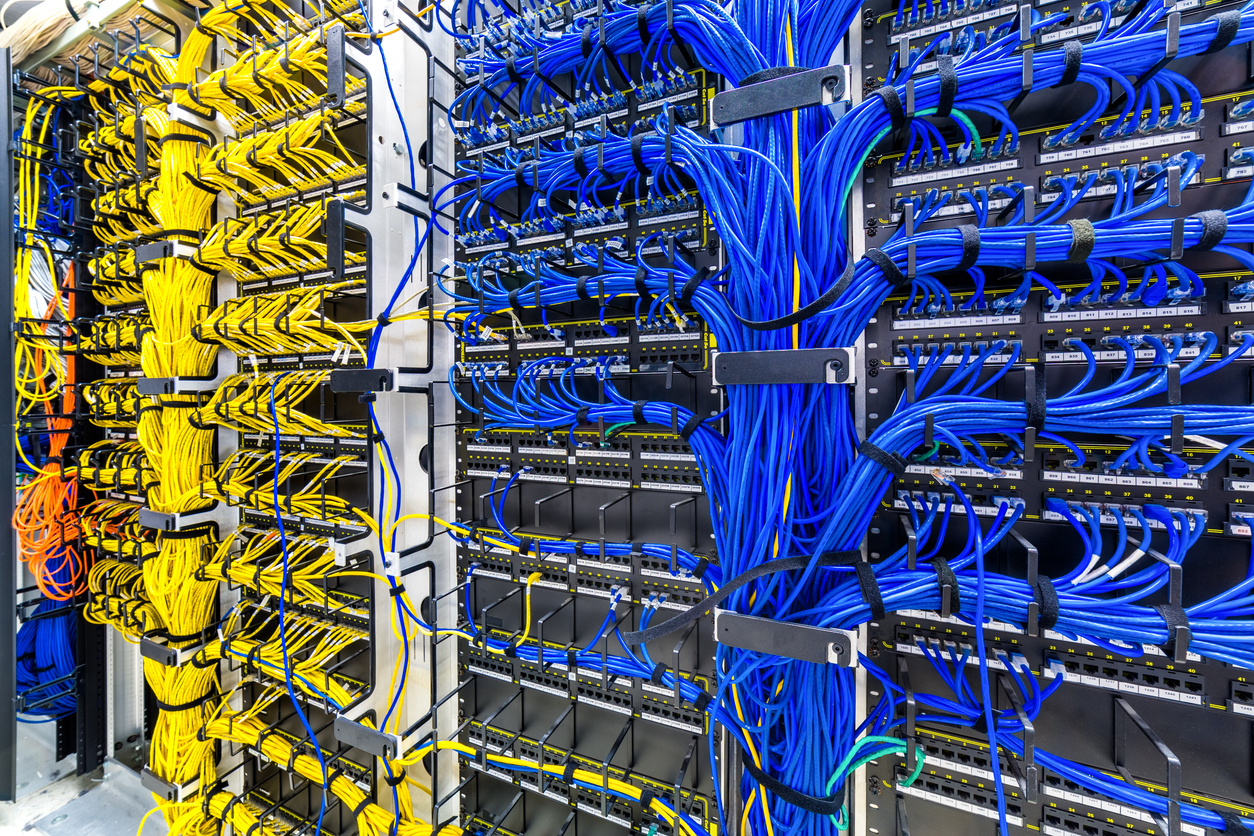Three frozen seconds can cost thousands of dollars in a busy data center. Gartner estimates the cost of network downtime at $9,000 a minute. Most teams look at servers first, yet the true villain is often hidden inside the cable trays: electromagnetic noise. At Camali Corp, our BICSI-certified crews catch this quiet thief on almost every audit, usually after it has already slowed backup jobs by 40% or more. The good news? Noise is physical, visible, and fixable with the right steps. Let’s uncover what sparks cable interference and how to stop it before it steals another second of uptime.
The High-Stakes Cost of Interference
- Slower packet flow means more re-tries, higher latency, and cranky apps.
- Extra retransmissions burn switch and server CPU, shaving hardware life.
- One Fortune 500 firm lost 2 hours on nightly backups until we fixed their cabling path.
“Anything that shares a path with power will share the noise.” — IEEE Fellow Jack Ganssle, Embedded.fm Ep 295
Why Interference Gets Missed
Even advanced monitoring tools miss noise because it’s not software, it’s physical. That’s why cabling audits remain crucial for fast networks. Identifying interference early avoids major hardware wear and costly downtime.
“This issue often starts with poor cable management—disordered cabling systems not only hide physical issues but drive overheating, mistakes, and downtime” — as explained in Camali’s blog on cable management.
7 Common Sources of Cable Noise
1. Power Cables Too Close
Parallel runs of 480-V feeders can inject voltage into data pairs. Keep data and power paths at least 6 inches of space, or cross them at 90°.
2. Poor Grounding & Bonding
Multiple ground points create loops that act like radio antennas, which invite interference. Follow the single-point-ground rule in ANSI/TIA-607-D.
3. Unshielded Patch Cords Near Wi-Fi 6E Gear
Access points blasting at 6 GHz leak straight into copper if shielding is thin, or missing.
4. Over-Bundling & Tight Velcro
Crushed cables increase near-end crosstalk by 18 dB. Keep bundles under 24 cables and “loose.”
5. Mixed-Category Links
One sneaky Cat5e jumper inside a Cat6A channel is all it takes to raise insertion loss and invite noise. Camali Corp’s structured cabling services ensure every link meets the latest standards.
6. Crowded Switch Ports
Side-by-side SFP modules raise alien crosstalk levels. Use blank panels or staggered layouts to lower those levels.
7. Heat & Humidity
At 85% RH, moisture in polyethylene raises impedance, causing attenuation and errors.
Quick 15-Minute Interference Check
- Look: Are network and power trays closer than a coffee cup width?
- Measure: Walk the room with a $50 EMI meter; hotspots over 3 mG need action.
- Certify: Run a Fluke DSX test for NEXT and AXT on one suspect link.
- Ping: >2% packet loss likely indicates noise, not congestion.
- Ground: Confirm rack-lug resistance is below 0.1 Ω.
Use tools like the TriField EMF Meter or Fluke LinkIQ for quick diagnostics. Even a basic Cat6A cable tester can reveal elevated crosstalk or loss.
According to IEEE standards on grounding and bonding, improper grounding can act like a radio antenna, significantly increasing EMI risks between power and data cabling.
Proven Fixes From the Field
| Problem | Fast Fix | Long-Term Upgrade |
| Power and data trays stacked | Add a 6–8 in air gap or steel divider | Reroute data into separate raised tray |
| Unshielded patch cords | Swap for F/UTP | Convert full run to S/FTP or fiber |
| Poor grounding | Tie all racks to single-point bar | Full facility ground grid per IEEE-1100 |
| Mixed-category links | Replace the weak link | Standardize on Cat6A shielded |
Camali Corp Case Study
A retailer’s backup window ballooned by 41%. We found 250 Cat6A links running parallel to a 480-V ladder tray. After moving them into a shielded tray and bonding to a common bar, packet loss fell from 1.8% to 0.01%. Backups finished 2 hours sooner, saving $27,000 per month in labor and energy.
Result: Downtime dropped 98%. Backup times improved by 120 minutes. The client saved $324,000 annually from regained operations and avoided equipment wear.
Key Takeaways & Next Steps
Cable interference is common but preventable. Keep power and data separated, ground uniformly, use shielded or fiber links, and test before trouble spreads. Need expert help redesigning your cabling plan? Our consulting and design team is ready.



